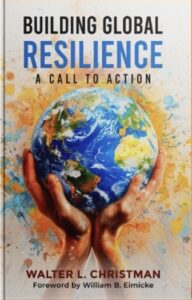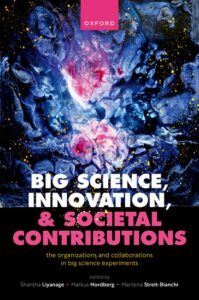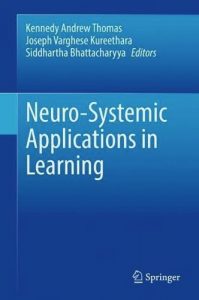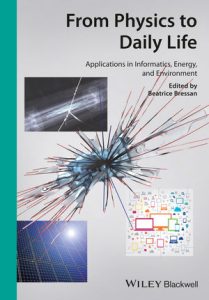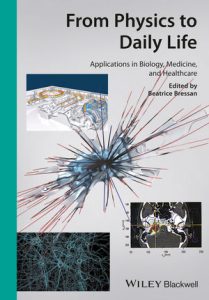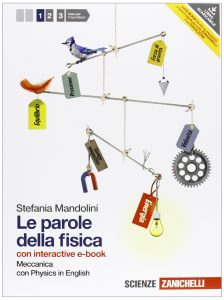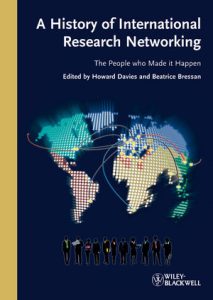This book with its facilitation guide Empowering Change represents a landmark in an era of global uncertainty, where resilience is more than a necessity, it is a movement. It is evolving into an online certificate program, offering: Knowledge Curation: understanding resilience as a driver of global progress; Connectivism: forging networks from ideas to impact; and Action Learning: transforming principles into real-world solutions. Its launch was in Mumbai on November 16, 2024, marking a pivotal moment on the United Nations International Day for Tolerance. This date also celebrates the anniversary of the founding (2010, Geneva) of the Global Challenges Forum (GCF) Foundation, of which the author is the Chairman and Founding Director, reinforcing its mission of fostering resilience through strategic foresight and action.
Introduction: Beatrice Bressan
Thanks to the interviews with Big Science leading researchers of experiments, this book provides information on the effective management of international research collaborations and gives insight into their experience. Thus, revealing new development-innovation approaches and epistemic cultures.
Chapter 10: Big Science as a Complex Human Enterprise, Beatrice Bressan, Anita Kocsis, Pablo Garcia Tello and Shantha Liyanage.
Chapter 12: Well-ordered Big Science, Innovation, and Social Entrepreneurship, Faiz Shah, Beatrice Bressan, Pablo Garcia Tello, Marilena Streit-Bianchi and Shantha Liyanage.
Neuroscience research deals with the physiology, biochemistry, anatomy and molecular biology of neurons and neural circuits and especially their association with behavior and learning. This book is intended to bring together the recent advances in neuroscience research and their influence on the evolving learning systems with special emphasis on the evolution of a learner-centric framework in outcome based education by taking into cognizance the learning abilities and intentions of the learners.
Chapter 20: Communication Beyond Learning: Knowledge Management and Technology Transfer into Education, Beatrice Bressan.
This book (Volume I) describe a number of outstanding examples of successful cross-disciplinary technology transfer originating in fundamental physics research, which dramatically impacted scientific progress in areas which changed modern society. Many of them were developed at CERN, a hotbed of fundamental inventions in particle physics. It deals with breakthrough developments being applied in the world of IT, consumer electronics, aviation, and material sciences. Additional sections of the book deal with knowledge management and technology transfer including their economic aspects.
Each chapter has been drafted by an expert in the field.
This book (Volume II) describes a number of outstanding examples of successful cross-disciplinary technology transfer originating in fundamental physics research, which dramatically impacted progress in biomedical research and clinical applications. Many of these examples were developed at CERN, a hotbed of fundamental inventions in particle physics. Additional sections of the book deal with knowledge management and technology transfer including its economic aspects.
Each chapter has been drafted by an expert in the field.
Questo libro racconta la fisica per concetti, con molta attenzione ai collegamenti con il mondo quotidiano e con le altre discipline. All’interno:
Schede di biologia, architettura, letteratura, arte.
Con gli occhi del fisico: due pagine per ogni capitolo che ripercorrono un fenomeno o una tecnologia nella storia, rivisto con gli occhi di uno scienziato.
Mappe dei concetti: due pagine a fine capitolo per ripassare a colpo d’occhio.
Physics in English: Maths Talk e Physics Talk (formule e letture di matematica e fisica in inglese).
Capitolo La materia: Beatrice Bressan e Stefania Mandolini
After twenty-five years of preparation, the Large Hadron Collider (LHC) at CERN is finally running its intensive scientific experiments into high-energy particle physics. These experiments take the world of physics to a new energy level, the terascale, at which elementary particles are accelerated to one millionth of a percent of the speed of light and made to smash into each other with a combined energy of around fourteen trillion electron-volts.
This book aims to give a broad organizational and strategic understanding of the nature of “big science” by analyzing one of the major LHC experiments, the ATLAS Collaboration.
Chapter 10: The Individual in the ATLAS Collaboration: A Learning Perspective, Beatrice Bressan and Max Boisot
This book describes the knowledge acquisition in a research organization and the knowledge transferred to other institutions to analyze benefits for society. It is based on two samples of scientists participating in CERN programmes during the LEP collider period. The analysis uses a new model developed by the author combining two knowledge creation approaches: individual (Kurki-Suonio) and organizational (Nonaka). This study provides evidence that the social process encourages the advance of both, scientific and technological processes. It is one of the key procedures of the learning process to create new knowledge and innovation. The new model could be considered as universally applicable.
This first book written and edited by the people who developed the Internet, this book deals with the history of creating universal protocols and a global data transfer network. The result is THE authoritative source on the topic, providing a vast amount of insider knowledge unavailable elsewhere. Despite the huge number of contributors, the text is uniform in style and level, and of interest to every scientist and a must-have for all network developers as well as agencies dealing with the Net.

